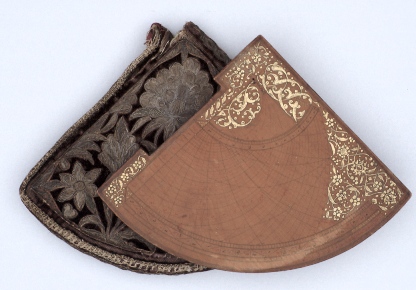Materials | |||
|
As with many other civilizations, gold and silver were the most precious materials available in the Islamic world. Royal treasuries such as that of the Topkapi Palace in Istanbul preserve ornate creations encrusted with gems. But objects made of these metals were easily melted down in times of need and they do not survive well. In addition, strict Muslims shunned gold and silver vessels and there was considerable debate on the extent to which these metals could be used as inlay on brass.
Brass is therefore the dominant metal of surviving decorative artefacts, as well as scientific instruments. But just as there were many other media for Islamic art, such as textiles and ceramics, so instruments use a variety of materials. Wood provided a lightweight, easily-inked surface for portable quadrants and stone was used for outdoor sundials. Occasionally semi-precious stones were added to instruments for decorative effect, and manuscripts used gold and colour in their illuminations and miniatures. |
|||
| |||
| Copyright © Museum of the History of Science 2010-11, unless explicitly noted otherwise | Privacy policy |

|

